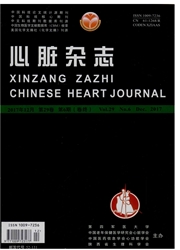

 中文摘要:
中文摘要:
探讨小型猪体外循环(CPB)实验模型的建立和麻醉管理。方法:小型猪12头,全麻诱导插管后,应用全血冷灌方法建立中低温阻闭升主动脉的体外循环模型,并于围CPB期进行动、静脉血氧饱和度(SaO2、SvO2)、血细胞比容(Hct)及乳酸水平(Lac)测定,同时监测围CPB期血流动力学变化。结果:转流过程中SaO2、SvO2均在正常范围,Lac水平随CPB时间延长,显著升高,Hct在CPB后呈中度稀释,平均血压在CPB后自主循环恢复后经过较短时间恢复到正常范围内。结论:全血冷灌法建立的小型猪CPB模型,可做为CPB条件下开展研究的动物模型。赵茎’
 英文摘要:
英文摘要:
To investigate the establishment and management of anesthesia and cardiopulmonary bypass (CPB) in a mini-pig model. METHODS: Twelve mini-pigs were used in this experiment. After successful anesthesia and tracheal intubation, mediastinotomy was performed to expose the heart and great vessels. CPB was established with cannulations of ascending aorta as well as superior and inferior vena cava. The circuit was composed of a mini-type membrane oxygenator, an arterial filter and a roller pump, which was primed with 250 ml balanced solution. CPB was conducted under moderate hypothermia and hearts were arrested with antegrade blood cardioplegia infusion. Hemodynamic data, arterial and venous oxygen saturation ( SaO2, SvO2 ), hematocrit (Hct) and blood lactate acid concentrations (Lac) were determined at different time points. RESULTS: The blood was moderately diluted according to Hct val- ues. SaO/and SvO2 were maintained at the normal range during the CPB period, whereas Lac increased significantly with elapsed CPB time. Mean arterial blood pressure decreased significantly compared with the pre-bypass value and returned to baseline value after CPB disconnection. All hearts were successfully arrested with cardioplegia infusion and spontaneous rhythm restored upon aortic cross-clamping removal. CONCLUSION: CPB is successfully established in this mini-pig model, which can be used for CPB- related in vitro experiments.
 同期刊论文项目
同期刊论文项目
 同项目期刊论文
同项目期刊论文
 期刊信息
期刊信息
